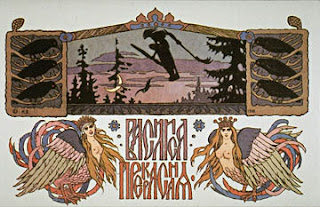A very happy All Hallow's Eve to you! My recent ghoulish posts referencing the Day of the Dead, Cat Mummies, and Russian Witches have all been in celebration of this, Halloween, the Anglicized version of the ancient Celtic festival of the dead, Samhain. Here we go plunging into the dark side of the year, an experience that prompted our ancestors to listen closely to the chill Autumnal winds for the voices of their beloved departed. On this night, the veil between the worlds is at its very thinnest. It is a night when one may catch a glimpse of things most often unseen.
The Crystal Ball, John William Waterhouse, Oil on canvas, 1902
The Crystal Ball, by preeminent Pre-Raphaelite painter John William Waterhouse hung for years in the dining room of Glenborrodale Castle in Scotland. When the castle, and with it the painting, changed hands in the 1950s the new owners had the skull painted over, covered up by the "curtains". The painting later sold again and with an old photograph and an X-Ray the skull was rediscovered. Because the original painting had been protected with a layer of varnish conservators were able to restore it and the skull emerged once again.

















